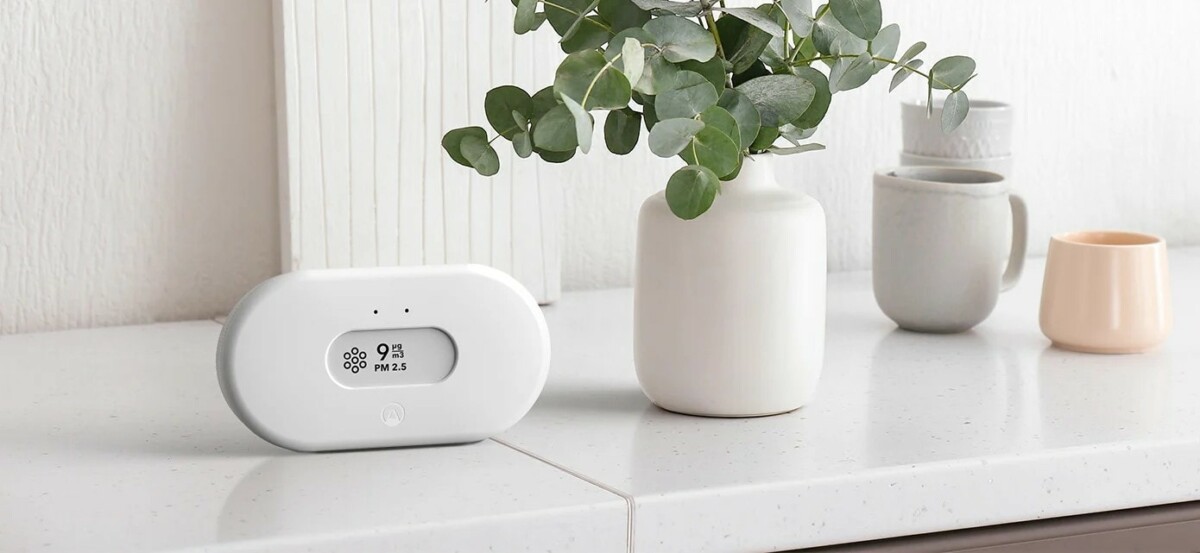Want to keep an eye on the quality of the air you breathe? There are devices for that! We have therefore selected for you the best air quality sensors on the market.
Although they have been brought to the forefront by Covid-19, air quality sensors are not only used to limit the risks of contamination. With lung diseases more prevalent than ever, it’s important to minimize the risks by breathing as clean air as possible. However, it can be complicated to know what is wrong, or to be alerted when dangerous thresholds are exceeded. For example, if you have just had a baby, ensuring good air quality in your home is essential.
Air quality detectors are useful accessories, but not all measure the same substances or offer the same functions. To help you find your way, we have selected the most interesting of them, focusing mainly on connected models.
Which device to measure indoor air quality?
Netatmo Intelligent Weather Station: the best sensor for connected air quality
Although it is no longer in its infancy (it has been available since 2013!), this kit made up of an outdoor weather station and an indoor module remains a benchmark in the field. As always with Netatmo, the design is careful and we are treated to a device dressed in aluminum. The outdoor module works with batteries while the indoor one will be connected to the mains via a USB connector.
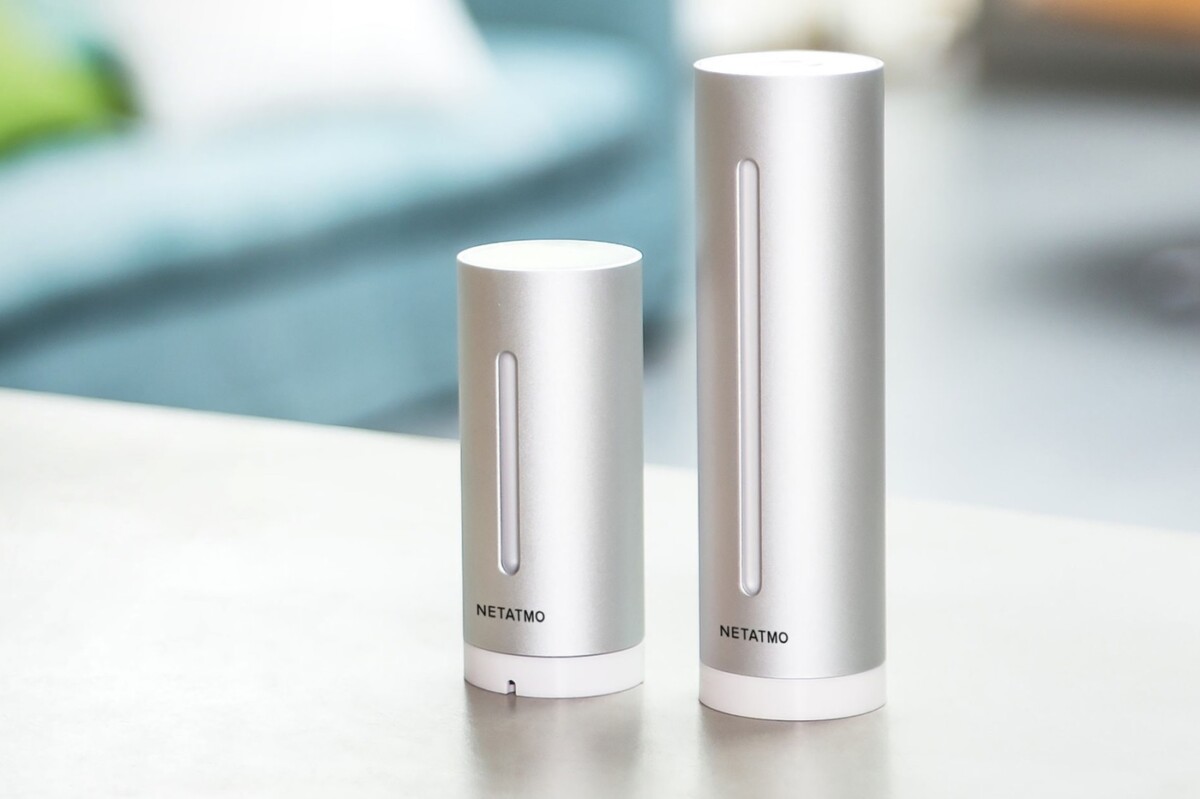
Everyone will also have to be connected to the WiFi network. Once the station is installed and the app downloaded, you will be able to access the temperature, the humidity level of the air as well as the CO2 concentration. A sound level meter completes all this and you can access the information via the application. The latter is practical to use and we particularly appreciate the possibility of creating alerts when certain thresholds are exceeded. There is also compatibility with Amazon Alexa for voice assistants.
The kit is scalable since you can add up to three additional indoor modules, but also enrich the weather station with an anemometer and a rain gauge. Versatile and efficient, the Netatmo weather station is all the more interesting as it is regularly on sale.
The Netatmo Smart Weather Station in brief:
- Dual use, weather station and air quality
- A neat look
- Value for money
Airthings View Plus: the outdoor air quality sensor to monitor radon
If you live in Brittany, Auvergne or Corsica, there is a good chance that you have heard of radon. This radioactive gas, produced by the uranium present in the earth’s crust, is, in fact, particularly present there.
A true Rolls of air quality measuring devices, the View Plus is packed with sensors, capable of detecting radon and is the most complete model in this selection. Equipped with a small screen, it can be fixed to the wall or simply placed on a piece of furniture. On the power side, it can run on 6 AA batteries or be connected to the mains via a USB-C connector.
It connects to your WiFi network and therefore does not require a special hub (even if one is available as an option). But where the View Plus is impressive is in terms of sensors where it is a hit. It measures temperature, humidity, VOCs, CO2, PM2.5 and even radon! Please note that the device will need a week for its sensors to be perfectly calibrated and for the radon and CO2 measurements to be precise.
Among its major strengths, we also note a very good mobile application and even a web dashboard. It’s also a success in terms of support for third-party services since we find Alexa, Google Assistant and IFTT.
For those who want to keep an eye on the quality of their air, there is nothing better than this Airthings View Plus. An excellence which, however, comes at a cost: no less than 299 euros. Yes, it stings, but if you are in an area affected by radon pollution, it may be worth it.
The Airthings View Plus in brief:
- Detects all types of pollutants
- Impeccable connectivity
- Cher
Eve Room: the home indoor air quality sensor for HomeKit enthusiasts
If you’re a fan of HomeKit, Apple’s home automation ecosystem, it’s a safe bet that you’ve already heard of Eve. This former branch of Elgato (yes, streaming accessories) is one of the references in the HomeKit universe, with a wide choice of connected products.
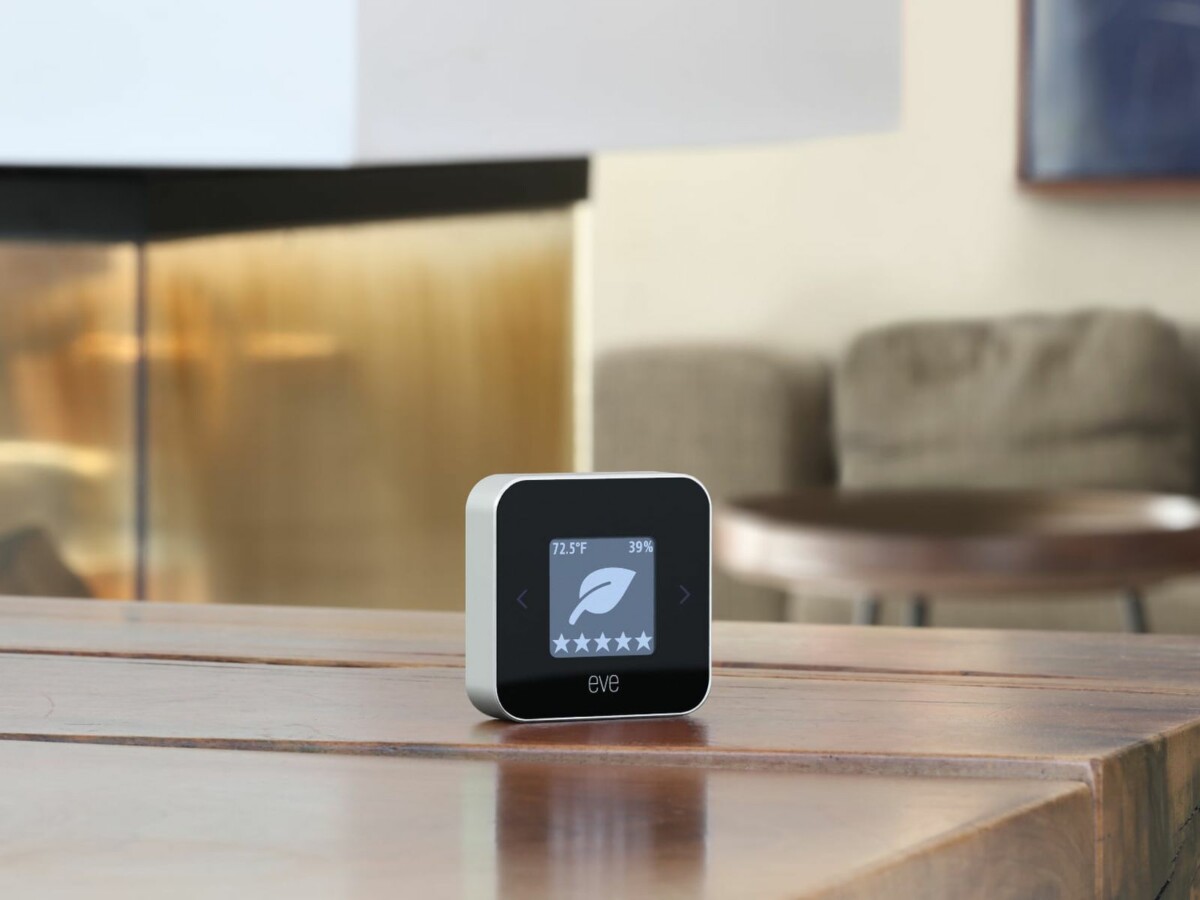
The Eve Room is the brand’s air quality sensor and is therefore only compatible with iOS products. To ensure information is transmitted via the internet, you will also need to have a HomePod or a 4th generation Apple TV.
With its compact format and ultra sleek look, the Eve Room is particularly discreet, the e-ink screen is not very large, but perfectly readable. On the measurement side, we are entitled to temperature, humidity and VOC. It’s a shame, however, that CO2 is absent. Which will pose a problem if you also want to monitor the transmission rate of Covid-19.
Battery life is around six weeks and charging is done via micro USB. It’s a shame that Eve didn’t take advantage of this update to switch to USB-C.
If it is not the most advanced sensor on the market, the Eve Room shines with an elegant design and above all absolutely perfect compatibility with the Apple ecosystem.
The Eve Room in brief:
- Very compact
- Elegant design
- HomeKit integration
Therm PTH-5: the indoor air quality sensor with temperature and CO2
If your budget is more limited, or you are really only interested in the CO2 level in your home, there are simpler and more affordable sensors that do not include connected functions.
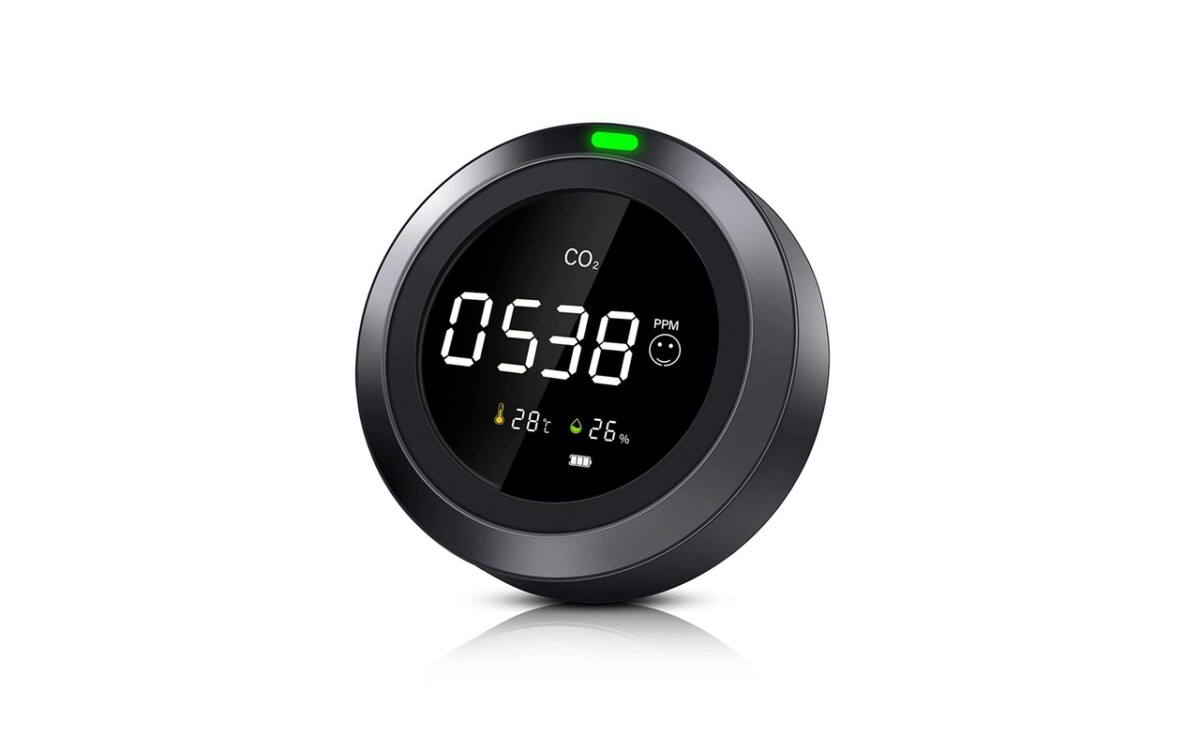
Among the dozens of models available we selected this one from Therm. It is relatively compact, capable of operating on mains via micro USB or 18 hours with the internal battery. This could be useful for those who plan to take it to the office for example.
In terms of measurements, it is the bare minimum, with temperature, humidity and CO2 concentration. Everything is displayed directly on a readable screen. If it doesn’t break three legs from a functional point of view, this sensor is reliable, mobile and particularly affordable.
The Therm PTH-5 in brief:
- Usable on mains and battery
- Screen readability
- An attractive price
Amazon Smart Air Quality Monitor
If you have an Alexa connected environment at home, this small indoor air quality monitor will be sufficient. Its main advantage: its price.
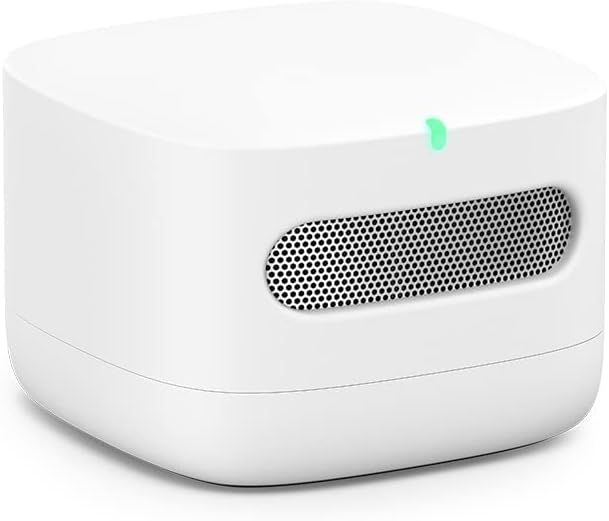
It is capable of monitoring five data points: particulate matter (PM 2.5), volatile organic compounds (VOC), carbon monoxide (CO), humidity, and temperature. This information is accessible directly in the Alexa app, with an air quality score. The latter is also indicated via a colored LED on the monitor. You can easily connect it to an air purifier via a routine.
The Amazon Smart Air Quality Monitor in brief:
- 5 key factors monitored
- Sending notification in the event of deterioration in air quality
- An attractive price
Our other connected home guides
Are you looking to improve your health and comfort at home? We then advise you to consult our various guides on the subject:
What is an air quality sensor used for?
How to check air quality?
Not all air quality sensors are created equal. Almost all of them measure CO2 levels, humidity and temperature. VOCs (Volatile Organic Compounds) are also among the points often measured. Among the pollutants that are more rarely taken into account, we note PM2.5 or even radon. The pollutants most often measured:
- Le CO2 : carbon dioxide is a gas produced, among other things, by respiration and photosynthesis, harmless in small quantities, however it can cause concentration problems or headaches. It’s also a pretty good marker for measuring how renewed the air in a room is. Its normal indoor concentration ranges from 400 to 1000 ppm; above this threshold, the negative effects increase, up to death above 40,000 ppm.
- The COV : volatile organic compounds bring together a multitude of substances capable of easily passing from a gaseous to liquid state. While some of them come from natural processes, the most dangerous come directly from human products. This includes solvents, diluents, degreasers or hydrocarbons. Many of them are toxic, with some like Benzenes being carcinogenic.
- PM2.5 : behind this term (Particulate Matter) are in fact fine particles with a diameter of less than 2.5 µm. Mainly produced by heaters and vehicles, these are particularly bad for breathing and asthmatics.
- Radon : radon is a radioactive gas naturally produced by the disintegration of uranium and radium contained in the earth’s crust. It can in particular cause lung cancer. However, its presence varies greatly geographically. In France, Brittany, Auvergne and Corsica are particularly affected. IRSN provides a map of risk areas at the municipal level.
How can I improve the quality of my ambient air?
Knowing that your air quality is poor is one thing, but you still need to be able to remedy it. Fortunately, there are relatively simple actions to improve things.
First of all: ventilate! Open your windows as much as possible every day, especially in bedrooms and rooms where you stay most often. Be careful though, if your windows face a busy road, avoid rush hours to limit automobile pollution.
Also check that the mechanical ventilation (VMC type) is functional and well maintained, in particular the filters. Do not block the air vents under any circumstances and clean them regularly. Also avoid incense, candles and other room fragrances.
Finally, using an air purifier may be useful in certain cases, but this option is more expensive.
How to measure Covid with an air quality detector?
In fact, it is impossible to directly detect the Covid-19 virus via an air quality sensor. However, initial research found that the presence of the virus was linked to the concentration of CO2 in the air breathed. According to some epidemiologists, the standard value for a low transmission rate is a CO2 level below 600 ppm.
Source: www.frandroid.com


